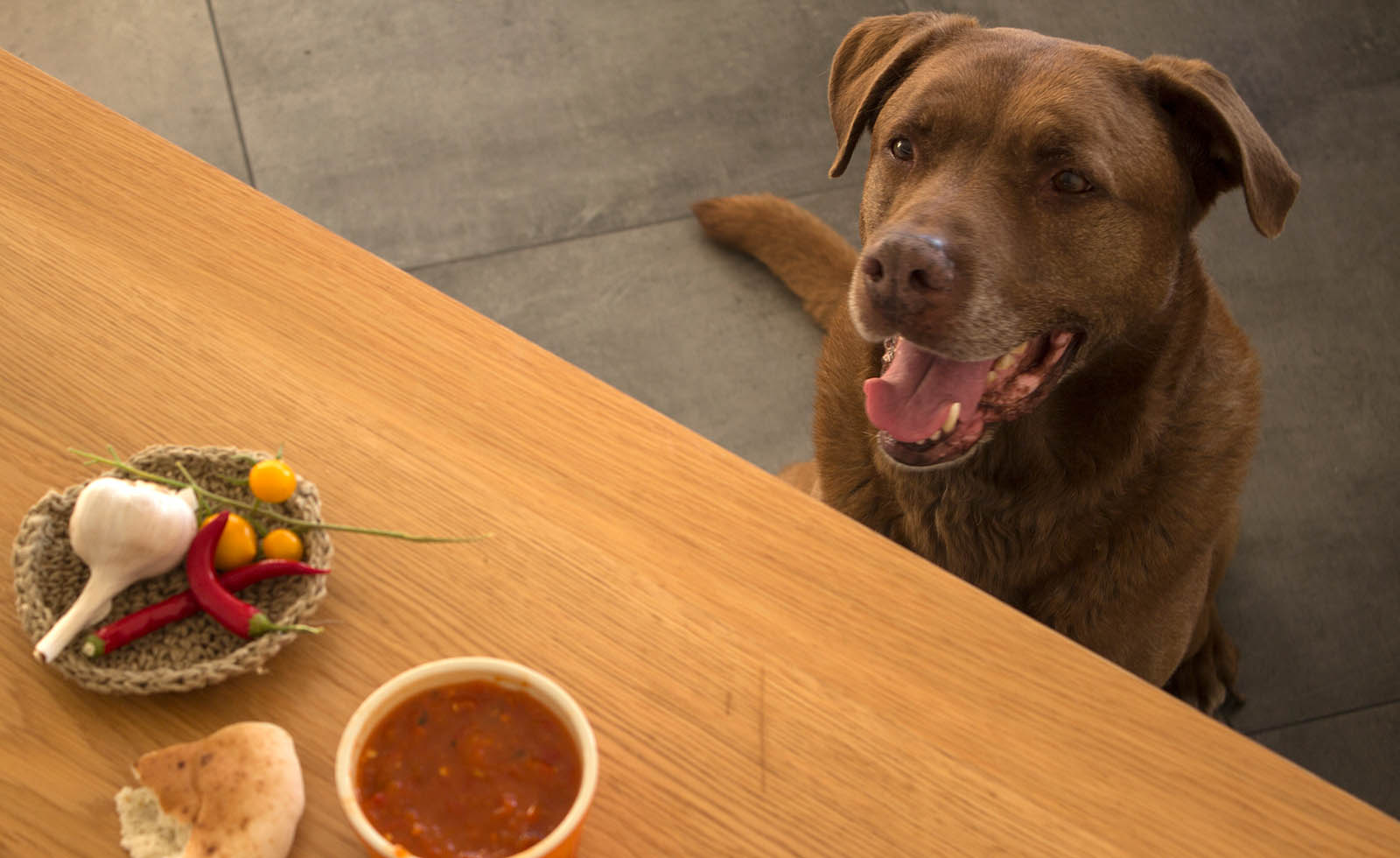Can Dogs Eat Garlic?

DogFoodAdvisor is reader supported See how
Dog Food Advisor is 100% impartial and is never paid to promote any brand. But if you buy using links on this page, we may earn a referral fee.
Although most dogs would quite happily take a seat at their parents’ table and eat the same meals, there are plenty of reasons why this is a bad idea.
For a start, table manners aren’t really a dog’s forte, but more important than this is the fact many foodstuffs fine for human consumption are actually poisonous to dogs.
One of these is garlic, a mainstay in different cuisines from around the world. This innocuous-looking bulb is actually toxic to dogs’ insides, so every effort should be made to keep it from their mouths.
Why is garlic poisonous to dogs?
Along with other members of the allium family — including onions, leeks and chives — the offending substance contained within the plants are organosulfides. These are converted to sulfur compounds when moving through a dog’s body, which can damage red blood cells.
As these cells are responsible for transferring oxygen around the body, there are dangerous consequences should they be impeded in their job, including hemolytic anemia, hypertension or hemolysis (the destruction of red blood cells).
Can dogs eat raw garlic?
As raw garlic contains the toxic organosulfide compound, it makes it unsafe for dogs to eat. Consuming even just 2g per pound of your dog’s bodyweight can cause medical issues, and these problems can become more serious the more garlic your dog consumes. For reference, a single clove of garlic can weigh 5g, meaning a bulb can contain 50g of garlic.
Can dogs eat cooked garlic?
Cooking, processing or drying garlic doesn’t make it any less toxic to dogs, so anything that uses it as an ingredient can pose a possible risk.
Can dogs eat powdered garlic or garlic salt?
Powdered garlic and garlic salt comprise more concentrated forms of garlic, meaning smaller amounts can potentially be more toxic for your dog. Most toxic encounters with garlic for dogs involve them eating powdered garlic or garlic salt, as a small amount can be highly toxic. If your dog has eaten these forms of garlic, take them to your veterinary surgeon as soon as you can.
Can dogs eat garlic bread?
Like other foods cooked with garlic, you should not feed garlic bread to your dog. Not only as it contains garlic which poses a risk of health complications (although it will generally be a low amount of garlic, so the toxicity risk is lower), but also because it’s made with butter, salt and possibly cheese, all ingredients that could cause potential stomach issues as well as lead to obesity in the longer term.
What are the symptoms of garlic poisoning in dogs?
When garlic starts to play havoc with your dog’s insides, there are some easily spottable signs. These include:
- Vomiting
- Diarrhea
- Abdominal pain
- Loss of appetite
- Lethargy
- Panting
- Drooling
What should I do if my dog consumes garlic?
This depends on how much they eat.
Say your dog accidentally snaffles a slice of garlic bread or something comparatively sized while your back’s turned, don’t worry — a small amount is unlikely to be toxic. Just keep an eye out for the symptoms listed above in the following hours and contact the vet if they do.
But what happens if it’s not just a slice of garlic bread, but the whole loaf? Or somehow they’ve managed to scoff huge numbers of cloves or powder? This might sound outlandish, but new parents will quickly learn dogs are capable of the extraordinary when it comes to eating things they shouldn’t.
In this hypothetical situation, it’s important to have your dog be seen by a vet as soon as possible, as speed is of the essence when it comes to the ingestion of poison.
If your vet deems it necessary, they might use activated charcoal to absorb the toxins or induce vomiting in your dog, although this can only be done in the two hours immediately after consumption. In severe cases, your vet might choose to perform a blood transfusion on your pet.
How much garlic is too much for dogs?
As mentioned above, a little bit of garlic shouldn’t cause too much harm. However, larger quantities are likely to bring about worrying reactions. As a general rule of thumb, this takes 15 to 30 grams of garlic per kilogram of a dog’s weight.
Admittedly, that would mean eating a fair few cloves in one go, especially for large-breed dogs. However, it’s thought some dogs are more susceptible to garlic poisoning than others and might feel detrimental effects after having consumed less.
What’s more, it’s possible this tipping point can be reached if your dog eats garlic across the space of a few days, rather than in one binge.
Why is there garlic in some dog foods?
After hearing this concerning prognosis, you’ll probably be surprised to learn garlic is sometimes listed in the ingredients of dog food recipes. As this article explains. Why would anybody entertain the idea of putting a poisonous substance in dog food?
This comes back to the level of garlic present again. Usually, there’ll only be tiny amounts of garlic present in commercially prepared dog food and this will have been approved as safe by the Association of American Feed Control Officials (AACFO).
In fact, one study concluded that dry dog food containing less than 1% garlic would be unlikely to have any negative health outcomes.
Why even run the risk in the first place, you might ask? Well, just as with the dishes humans prepare, garlic will make dog food taste better, but there are even some findings that garlic in carefully controlled doses can have a positive impact — one paper found that aged garlic extract could increase the number of antioxidant enzymes in a dog.
Of course, this trial was done under laboratory conditions using precise measurements — we wouldn’t advise trying to find the sweet spot when it comes to garlic in your kitchen at home, what with the scientifically proven consequences that come with accidentally giving your dog too much.
Some 4 and 5 star rated foods which contain garlic include:
- Wysong Optimal Performance
- CaniSource Red Meat
- Grandma Lucy’s Artisan Venison
- Blue Buffalo Freedom Adult Chicken
The bottom line
When it comes to garlic, consuming a large amount might give your dog an unwelcome reaction, or even prove fatal in rare scenarios. However, a little bit is unlikely to cause harm and it may even be beneficial in small doses.
As with many areas when it comes to your pets, we’d recommend following the experts. That means avoiding giving your dog garlic or human food that uses garlic as an ingredient, but not being perturbed if you see garlic listed as an ingredient in dog food.
Besides, isn’t your dog’s breath bad enough already without the extra garlic?
Final word
The Dog Food Advisor does not accept money, gifts, samples or other incentives in exchange for special consideration in preparing our reviews.
However, we do receive a referral fee from online retailers (like Chewy or Amazon) and from sellers of perishable pet food when readers click over to their websites from ours. This helps cover the cost of operation of our free blog. Thanks for your support.
For more information, please visit our Disclaimer and Disclosure page.



